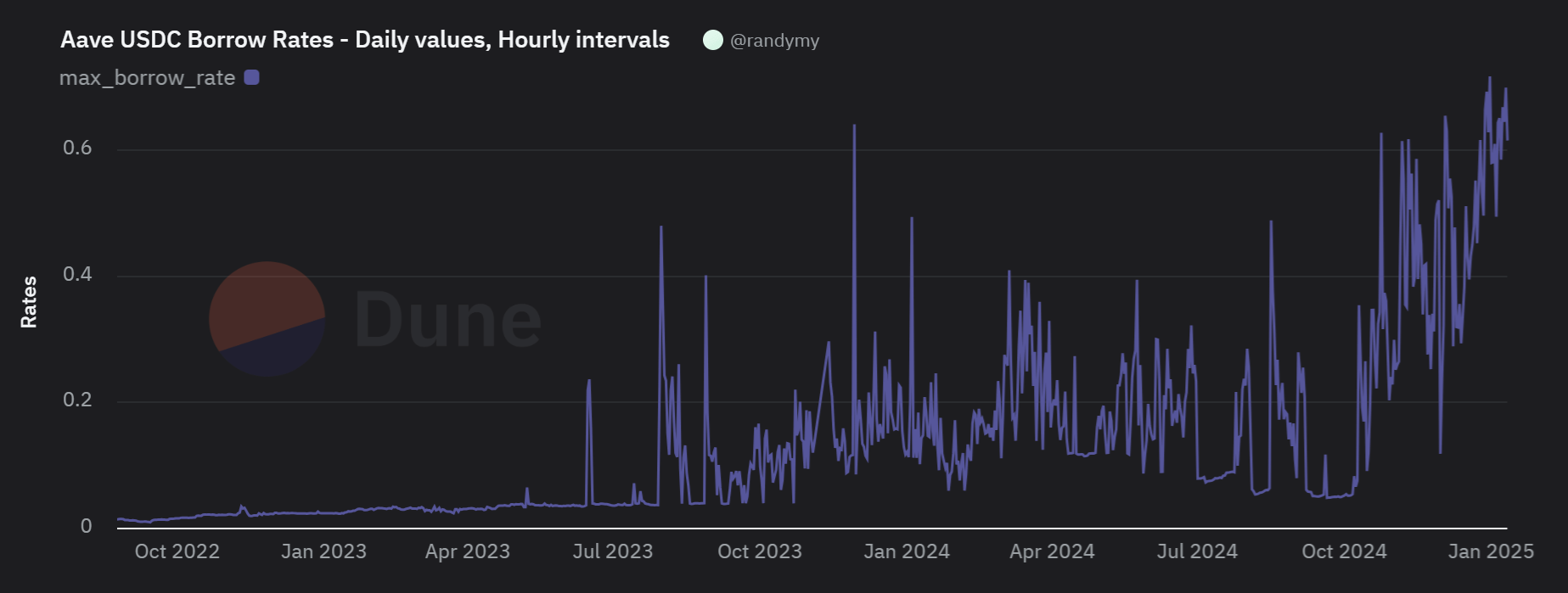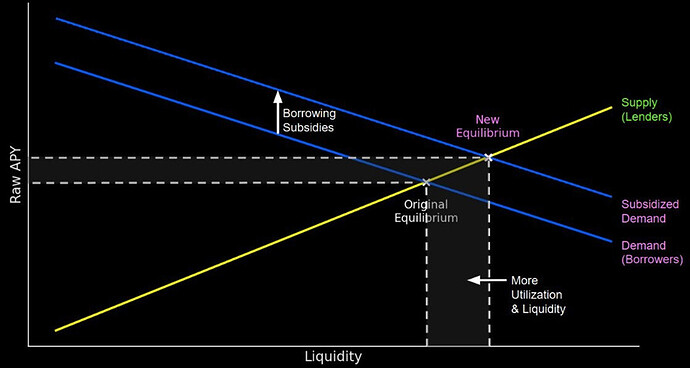Problems
1. High Stablecoin Borrowing Costs
Elevated Fed interest rates and growing demand for on-chain credit have driven up borrowing costs for digital assets in recent years, especially for stablecoins, which now comprise nearly half of DeFi's total outstanding debt. This creates an ongoing challenge for stablecoin borrowers who must face rising interest expenses as credit demand continues to grow. It also presents an opportunity for DeFi projects with new innovations that can address high stablecoin borrowing costs.

2. No Benefits from Centralized Stablecoin Reserves
The leading stablecoins, USDT and USDC, make up 95% of the total market. They also generate substantial interest earnings from their collateral reserves. However, these profits don't benefit their end users directly. Instead, centralized issuers like Tether and Circle internalize most of their reserve earnings, creating a disparity in value distribution.
As of Q2 '25, over 95% of stablecoin reserves globally are allocated in cash and equivalents (mostly by Tether and Circle), including bank deposits, money market instruments, and short-dated government bonds—yielding 4-5% APY. In theory, these yield streams from TradFi could be redirected toward stablecoin users and dApps to further stimulate on-chain economic activity.
By externalizing reserve earnings, the stablecoin industry could evolve from a centralized profit center to a key driver of growth in decentralized economies, aligning more closely with DeFi's core tenets of financial inclusivity and user empowerment.
3. Structural Drawback for Yield-Bearing Token Borrowers
Liquid-staked tokens (LSTs) and liquid-staked stablecoins (yieldcoins)—such as sUSDS, sUSDe, sfrxUSD, sfrxETH, stETH, etc.—are yield-bearing, supply-side assets designed to externalize their underlying earnings to token holders, including users who supply them in DeFi protocols. On the other hand, demand-side users who borrow LSTs and yieldcoins face a significant drawback: rapidly growing debt due to the token's underlying yield, which is owed as additional debt and compounded on top of borrowing costs.
To date, no LST or stablecoin/yieldcoin project has addressed the structural issue of yield-to-debt accrual for borrowers, making them capital-inefficient as debt instruments. As a result, these assets typically have very low utilization rates on lending protocols. This creates a structural imbalance in DeFi where LST and stablecoin yield distributions disproportionately benefit the supply side, leaving borrowers on the demand side at a disadvantage.
Solution
A novel solution to address the above challenges is redirecting reserve earnings to LST and stablecoin borrowers as interest rebates, rather than distributing them as yield to token holders or stakers. By subsidizing borrowing costs, these rebates can stimulate demand and increase protocol utilization—ultimately generating more yields for lenders. This is possible because borrowing subsidies effectively shift the demand curve upward, creating a new supply-demand equilibrium with higher lending rates that draw in more liquidity/credit supply. In other words, subsidized users are willing to borrow and pay lenders more in gross interest, creating a win-win dynamic for both sides of the market.

